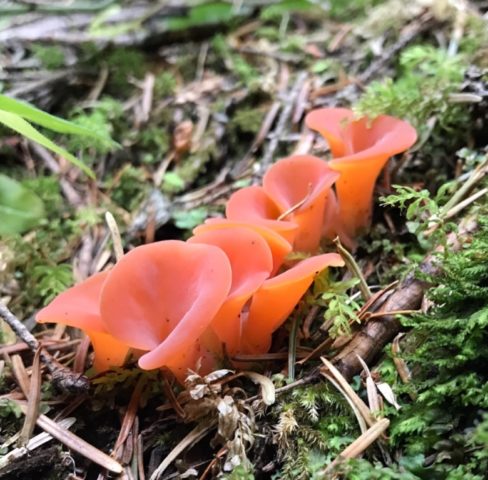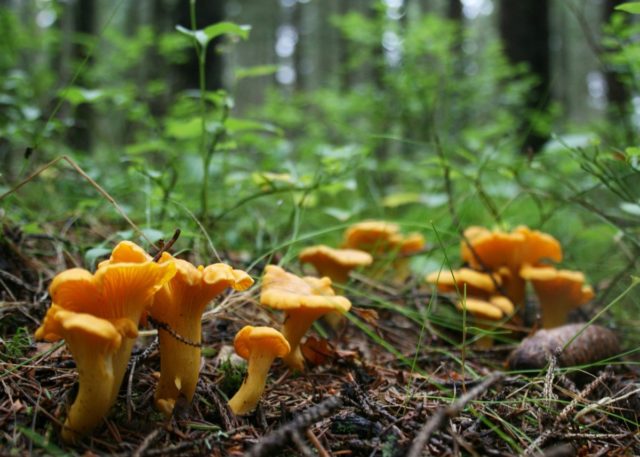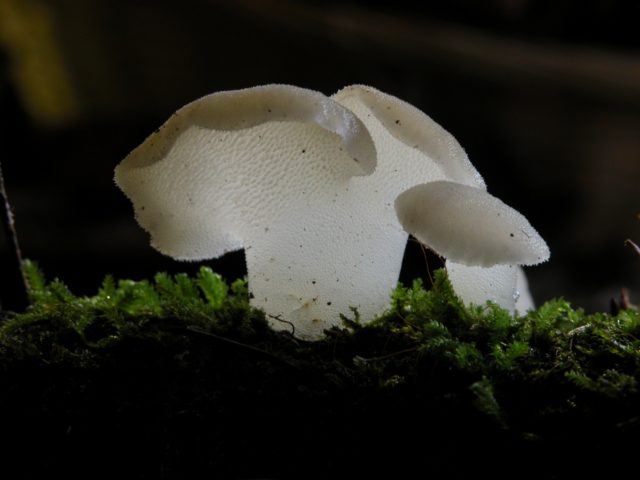Content
Hepinia helvelloid is an edible representative of the genus Gepinievs. A salmon pink jelly mushroom is often found on rotten woody substrates, on forest edges and felling sites. Widespread in the Northern Hemisphere.
What does Hepinia helvelloid look like?
The fruiting body has a funnel-shaped cap, which smoothly turns into a small stem. The mushroom is of medium size, height - 10 cm, the diameter of the cap is about 5 cm. The fruit body is pink-salmon colored. This forest dweller has an unusual, jelly-like, smooth, translucent structure. In adult specimens, the surface is colored reddish-brown and covered with veins and wrinkles. A smooth spore layer is located on the outer surface. The pulp is gelatinous, elastic, perfectly retains its shape, in the leg it is more dense, cartilaginous.

An unusual mushroom has a gelatinous structure
Where and how it grows
This forest dweller prefers calcareous soil, sprinkled with rotten, coniferous dust. Also found among moss or on the roots of decaying wood. Fruiting in single specimens or in small families from July to October. Occurs in open areas and logging sites.
Is the mushroom edible or not
Hepinia helvelloid belongs to the 4th group of edibility. But, despite the watery taste and lack of smell, the mushroom is very popular with mushroom pickers due to its attractive appearance. To distinguish Helvelloid Hepinia from other forest inhabitants, you need to know the external description, view photos and videos.
How to prepare helvelloid hepinia
Hepinia gelvelloid is widely used in cooking. It is used boiled, fried, and also for decorating and preparing salads. Young specimens can be eaten raw. Adult representatives are not suitable for collection, since their flesh becomes tough and not appetizing.
Also, the mushroom harvest can be preserved for the winter, added to vegetable dishes and as a side dish to meat dishes. Since this specimen looks like an appetizing jelly and goes well with sugar, you can make delicious jam, candied fruits from it, serve with ice cream and whipped cream, and use it to decorate holiday cakes and pastries.
Doubles and their differences
Hepinia helvelloid, like other inhabitants of the forest, has similar twins:
- Chanterelles - mushrooms are outwardly similar, but only from a distance and in poor visibility. Up close, even inexperienced mushroom pickers will not be able to confuse these completely different species, since chanterelles have a dense structure, are painted in a rich yellow color, have a pleasant aroma, and grow in large families. The spore-bearing side is folded rather than smooth. This representative is edible, perfect for cooking fried and stewed dishes.
Chanterelles grow in large groups
- Hericium gelatinous - belongs to the 4th group of edibility.In texture, it has the same dense gelatinous fruit body as in hepinia helvelloid, but in shape and color it is completely different. The leaf-shaped cap smoothly turns into a small dense leg. The surface is colored light gray or brown, the color depends on the degree of wateriness. The gelatinous pulp is soft, translucent, odorless and tasteless. The thorny spore layer is located over the entire surface of the pedicle. Grows in mixed forests from August to the first frost. Due to the lack of taste, this specimen is not popular with chefs. After heat treatment, it is used to decorate various dishes.
Due to the lack of taste and smell in cooking, they are rarely used.
Conclusion
Hepinia helvelloid is a beautiful, edible representative of the mushroom kingdom. Grows in a woody substrate in open, sunny places. In cooking, it can be used fresh, fried, boiled, suitable for preparing sweet preparations for the winter and as a decoration for dishes. Since hepinia helvelloid has no inedible counterparts, it is very difficult to confuse it with other forest inhabitants.










